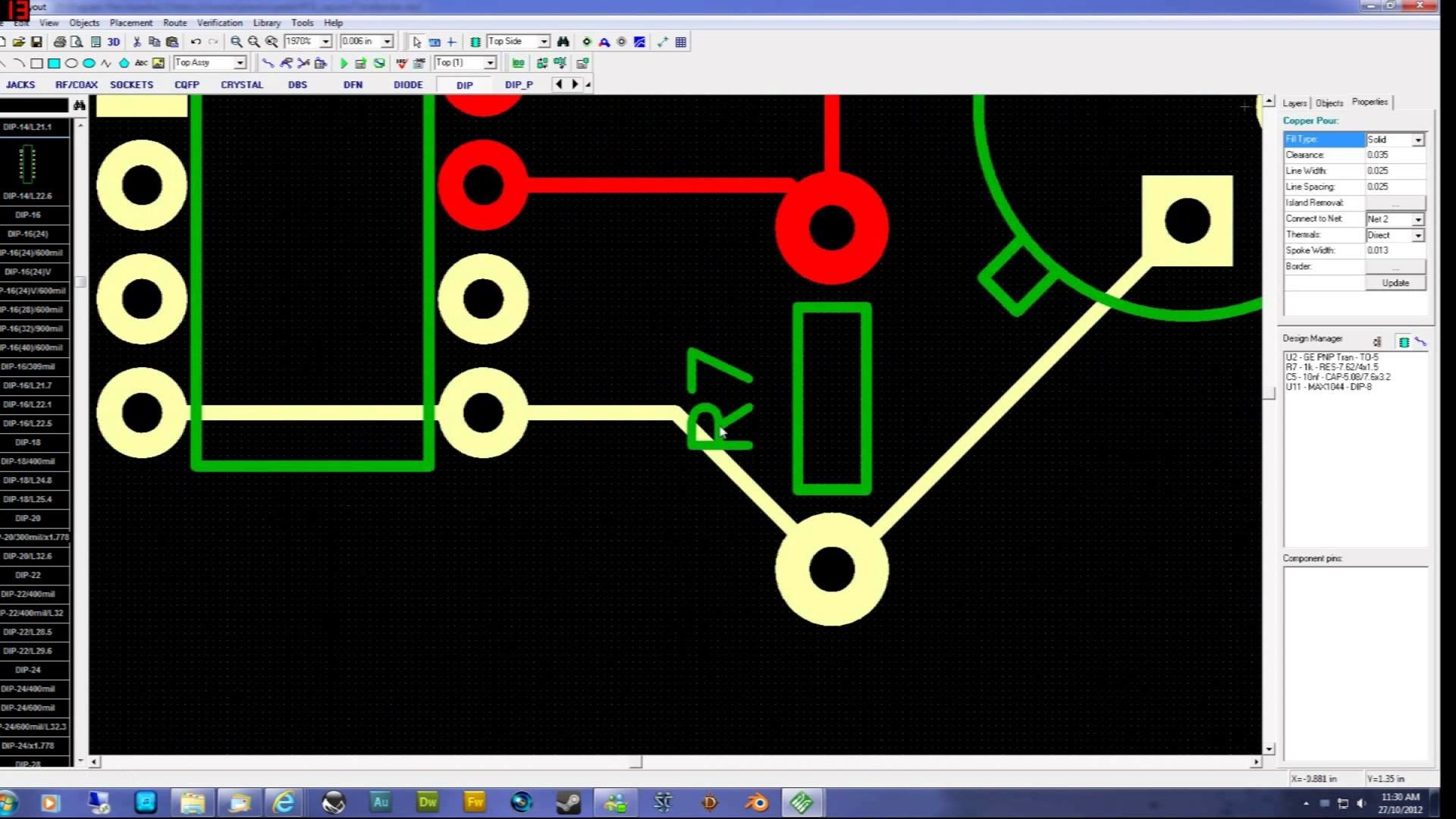


There are two options for routing: manual and automatic.įor auto-routing in DipTrace you simply select Route -> Run Autorouter and the software will automatically do all of the routing. Once all of the components have been properly placed it’s now time to perform the necessary routing. Most designs will require 4–6 layers, and more advanced designs may require 8 or more layers. The number of conducting layers is always an even number, so you can have a board with 2,4,6,8,10,12 conducting layers. But as the circuit complexity increases you’ll find it necessary to add additional layers. This means the top layer and the bottom layer can be used for routing signals, and these two layers are separated by an internal insulating layer.įor this tutorial we’ll start with a 2-layer board to keep things simple. The minimum number of conducting layers is two. Conducting layers are separated by insulating layers. PCB Layer StackĪ printed circuit board is made up of stacked layers. Once the transient load disappears the capacitors are recharged by the power supply so they are ready for the next transient increase in load current. Placing them right at the microcontroller’s supply pins allows them to supply any fast, transient current needs of the microcontroller. Remember, capacitors are like little batteries that store electrical charge. Decoupling capacitors are used to solve this problem. So even though the voltage regulator’s output may be a perfect 3.30V, the voltage at the microcontroller pin will be lower during this current surge. If the microcontroller all of a sudden requires a fast spike of current then it will cause a voltage drop across this trace resistor. So this means that if a voltage source is located far away from the load, which is the STM32 microcontroller in this case, there is essentially a resistor between the load and the source (neglecting any capacitance and inductance). Figure 2: Placement of all critical components (U1, U2, J1, and JTAG-1) and passive components (capacitors).


 0 kommentar(er)
0 kommentar(er)
